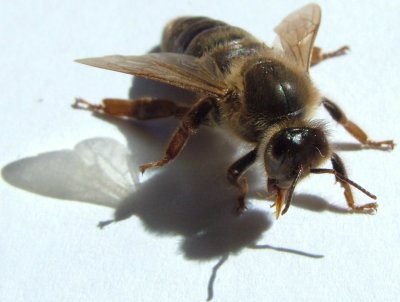
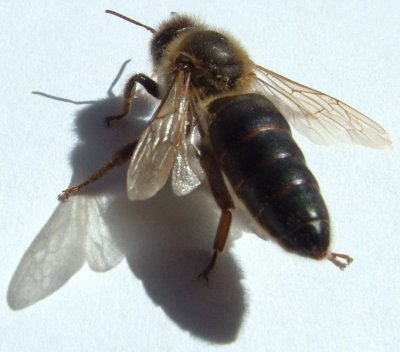
Extracting honey from a Warré hive box
The box was the first Warré hive box in the UK to be populated with bees. It was done on 26 April 2007 and the colony prospered in that season, eventually occupying three boxes. The box was inspected for possible harvesting in September 2007 but was found to contain a small patch of brood on a middle comb. Almost all the rest was honey. However, the honey was left as winter stores. The colony built up moderately fast in 2008 but as it was a very bad season for forage, no harvest was taken. In spring 2009 it appeared to be developing very slowly but as pollen was seem coming in it was given the benefit of the doubt. However, flight traffic was near zero by 14 June so the hive was opened.
The queen was found alive with a few bees. In the brood area were polished cells but no eggs. Many cells were filled with uncapped honey.


The bees were shaken out into the apiary and the queen was taken for photography. Please note that this colony has had no treatment against Varroa. It survived two winters. There was no honey in boxes 2 and 3 but box 1 at the top weighed 9.1 kg indicating that 4-5 kg honey, comb and pollen was in it. The photo below shows the top-bars with the cloth removed.
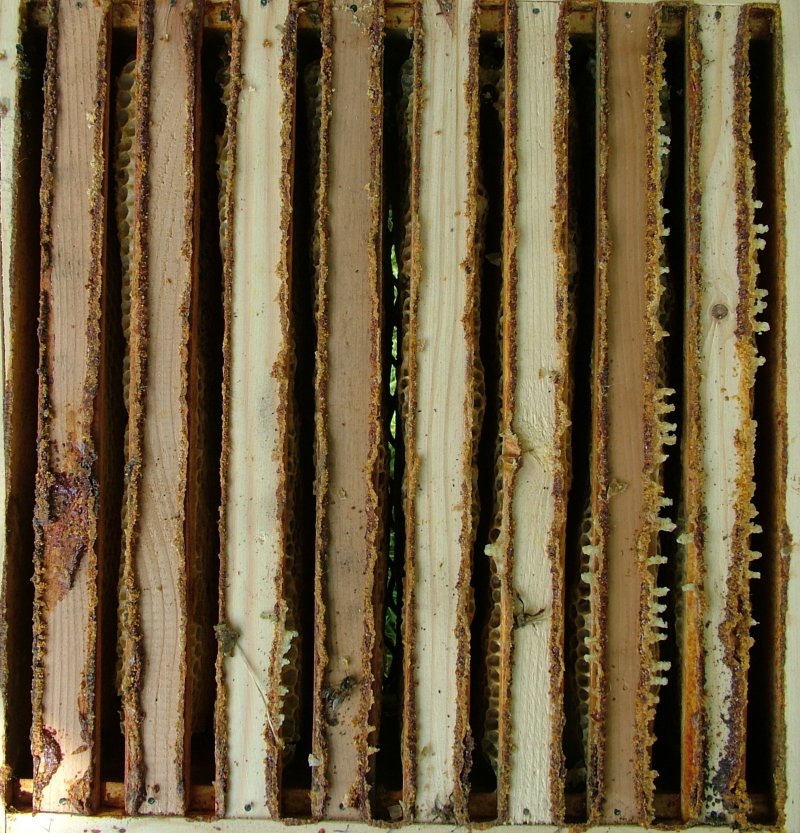
Below: View of combs from below.
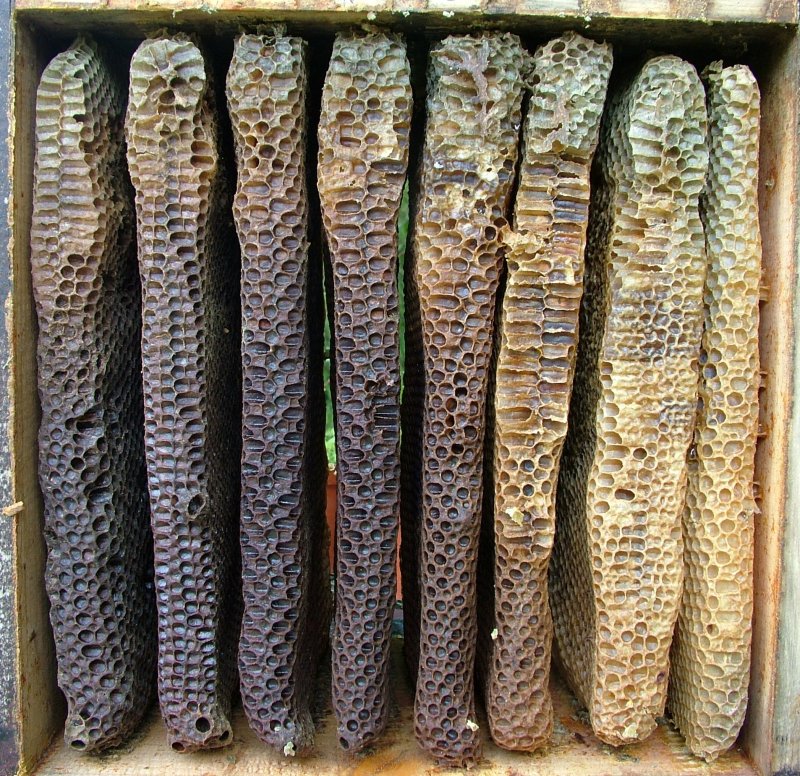
The combs were cut free from the sides and prized out with the top-bars one by one in order to examine for any signs of disease. The cells fell into the following categories: 1) capped with honey; 2) uncapped with honey; 3) pollen covered with honey; 4) empty and polished (brood area). A small amount of comb from an area not used for brood was harvested as cut comb. The honey areas were cut from the combs with a knife and the combs were then cut from the top bars leaving some comb behind to form starters for new comb. The box was cleaned with a hive tool, the window cleaned both sides and the top-bars replaced (see below).
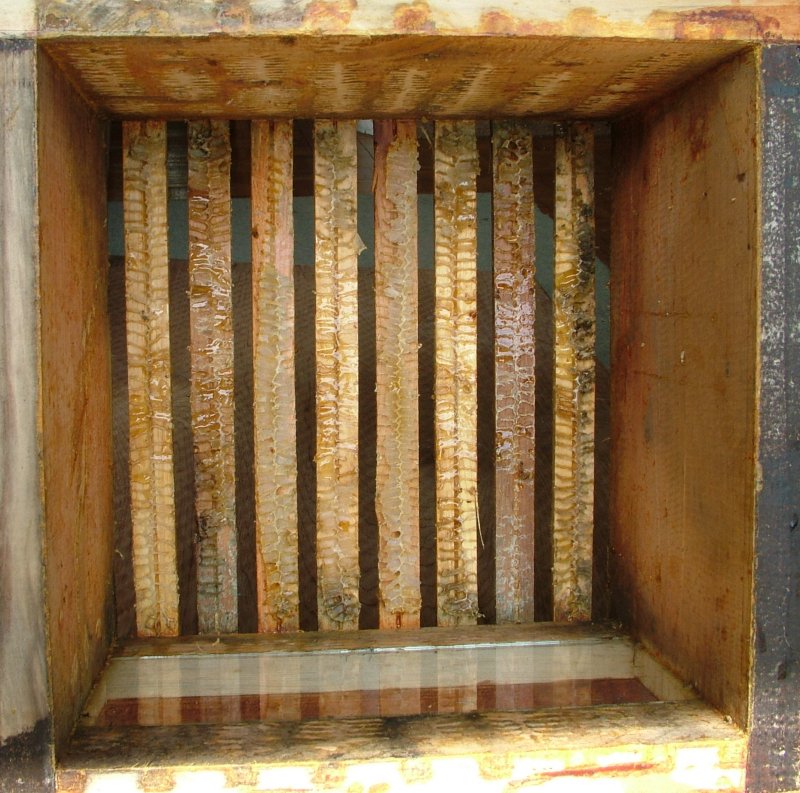
Below: Second comb in from one side showing areas of drone and worker cells and capped honey. The 1st comb adjacent to it had entirely drone cells.
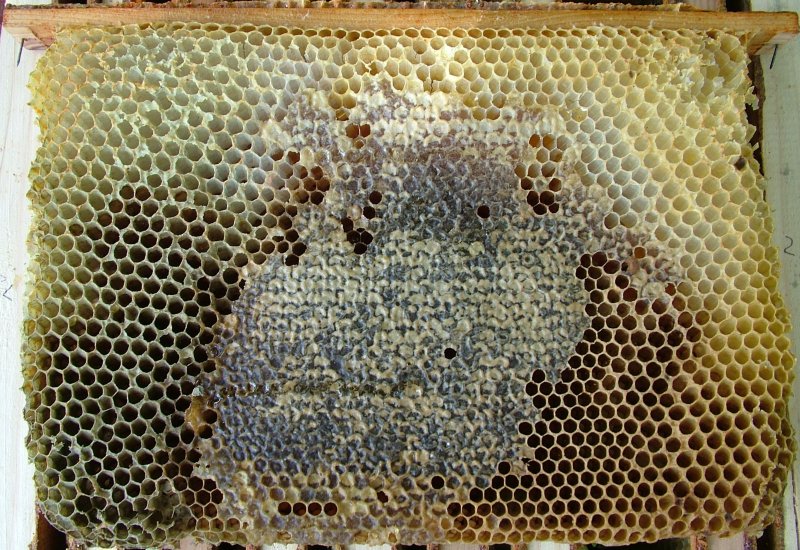
Below: Top-bars and comb sorted into: 1) dry or containing uncapped honey (left); 2) capped honey and comb (4.36 kg).
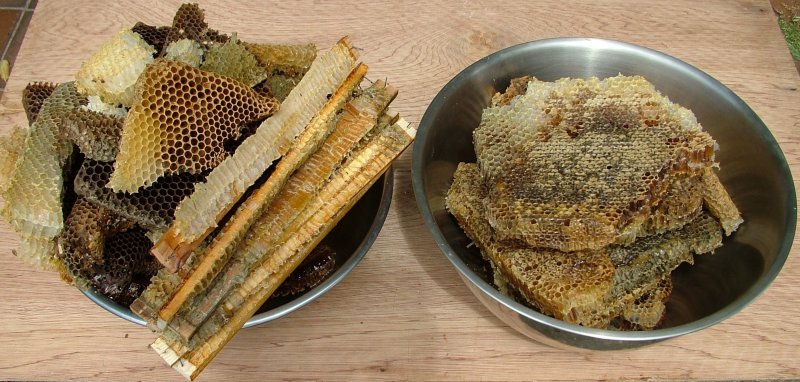
Below: Cut comb honey from near the top rear of one of the combs.
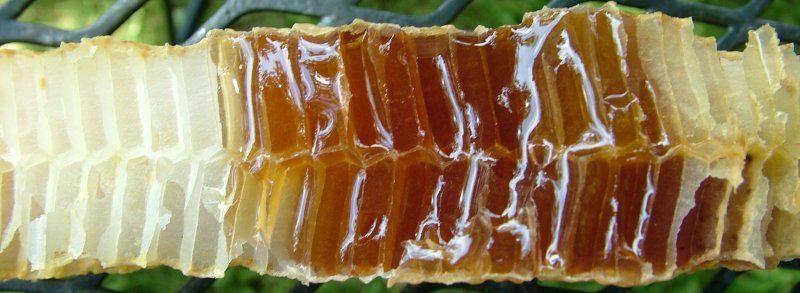
Below: The comb with capped honey was broken up into pieces, placed in a food grade plastic bucket and mashed thoroughly with a potato masher.
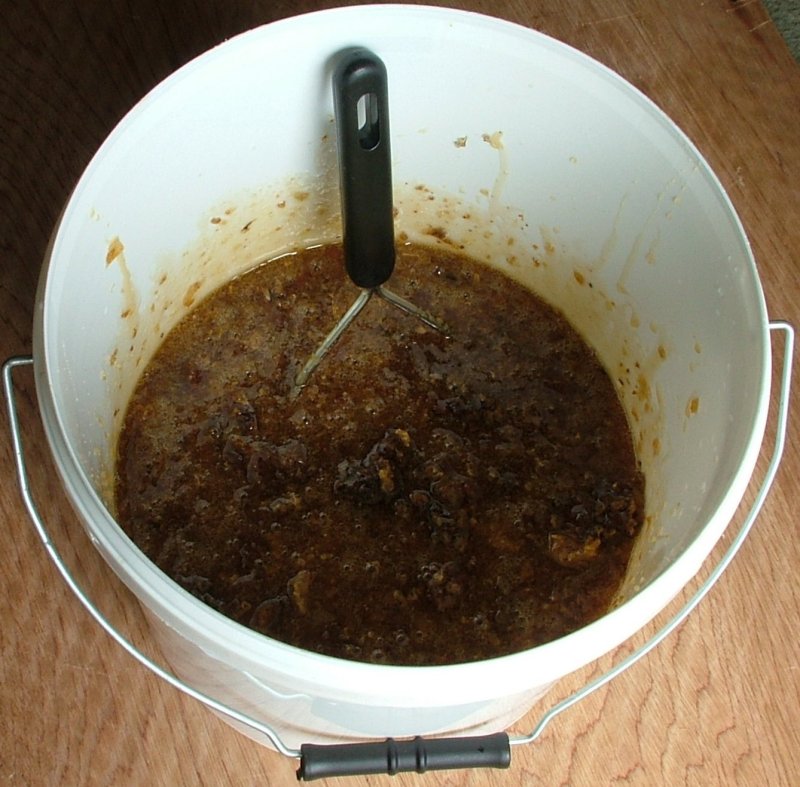
The mash was poured into a strainer over a bowl. In the picture below the strainer is lifted on top-bars to reveal the honey below. The yield of honey at this stage was 2.84 kg.
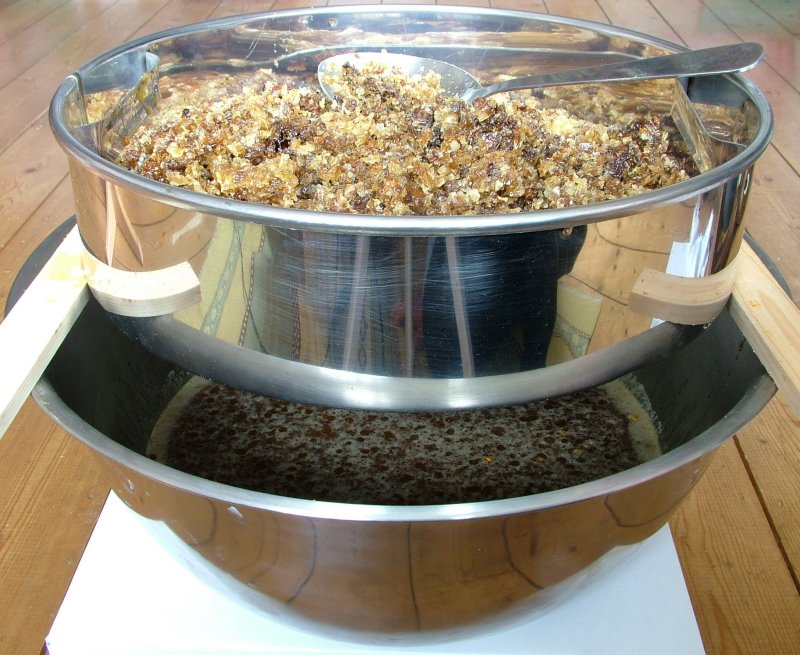
As the strainer has a fairly coarse mesh the honey was passed through a jelly bag as a final filtration.
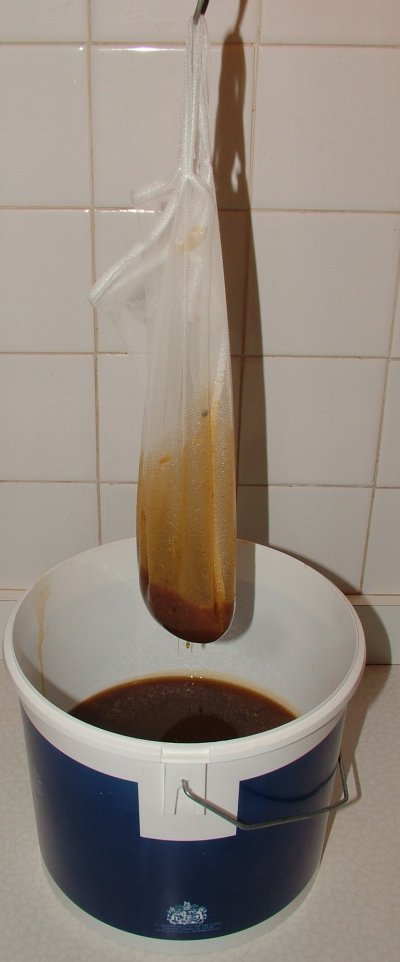
The honey was darker, even in new comb (see above), than the author is used to with summer crop honeys in his locality. Also, it had the less pronounced aroma that is usual with summer crop honey compared with the spring crop. However, as this was the first harvest from a hive populated two seasons previously, some of the honey harvested could already be two years old. And it is unlikely to be less than a year old as the most recently collected honey was uncapped and scattered amongst polished cells in the centre of brood area. Uncapped honey was discarded. A refractometer measurement of the final honey mixture gave a reading of 19.5% moisture which is borderline for good keeping.
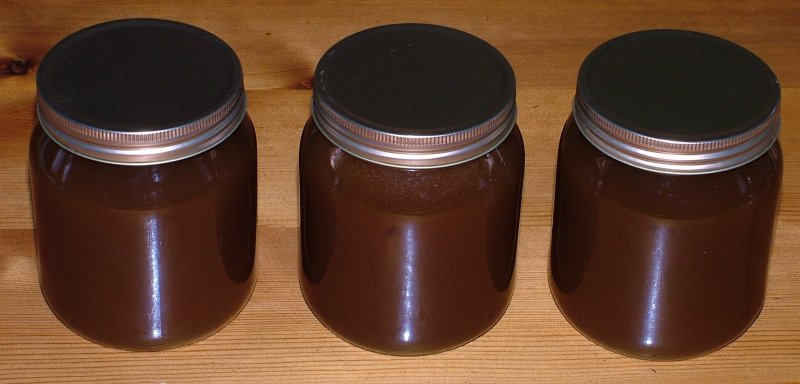
The yield in jars was 2.72 kg. The equipment and jelly bag were rinsed with warm water and the washings retained for feeding back to the bees.
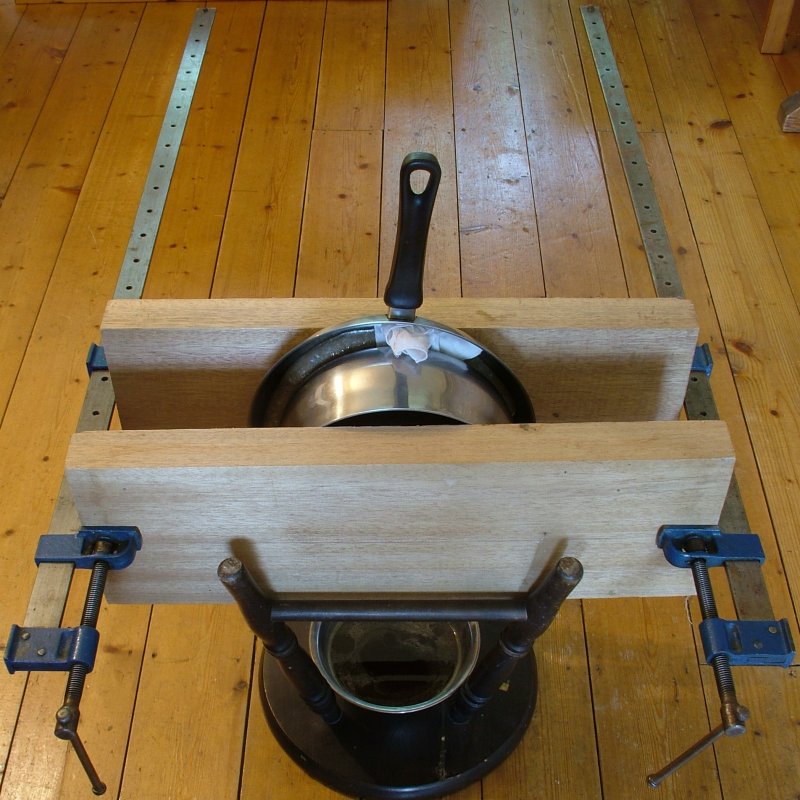
The comb fragments were placed in a fine cotton bag and weighed: 1.63 kg. As a considerable portion of this was honey, the bag was pressed using the improvised press shown above. It comprises two joiner's sash cramps, two planks, a stainless steel casserole, a stainless steel frying pan, a stainless steel bowl and a stool as support. The press is loaded with the board that is behind the frying pan in the photo above placed horizontally on a stool resting on the corner of a table. This is mainly to accommodate the long bars of the cramps and to make assembly possible by a single operator. A more practical press is under construction based on James Satterfield's design at https://sites.google.com/site/topbarbeehives/beekeeping/honey-press.
It was noticed that the pressed honey was a lot clearer than the honey drained from the crushed comb.
The yield of honey from pressing was 0.61 kg meaning that the pressed comb weighed 1.01 kg and probably still contained a lot of honey. The total yield of honey was 3.33 kg which is 76% of the starting weight of capped honeycomb selected for extraction. 18% of the honey was recovered at the pressing stage, showing the relative inefficiency of crushing and draining. Shredding and draining, which occurs in Gilles Denis' 'Moulimiel', yields almost dry comb as illustrated at http://www.ruche-warre.com/la-moulimiel.html .
The pressed comb was dispersed in a small amount of warm water and, combined with the washings mentioned above, fed back to the bees.